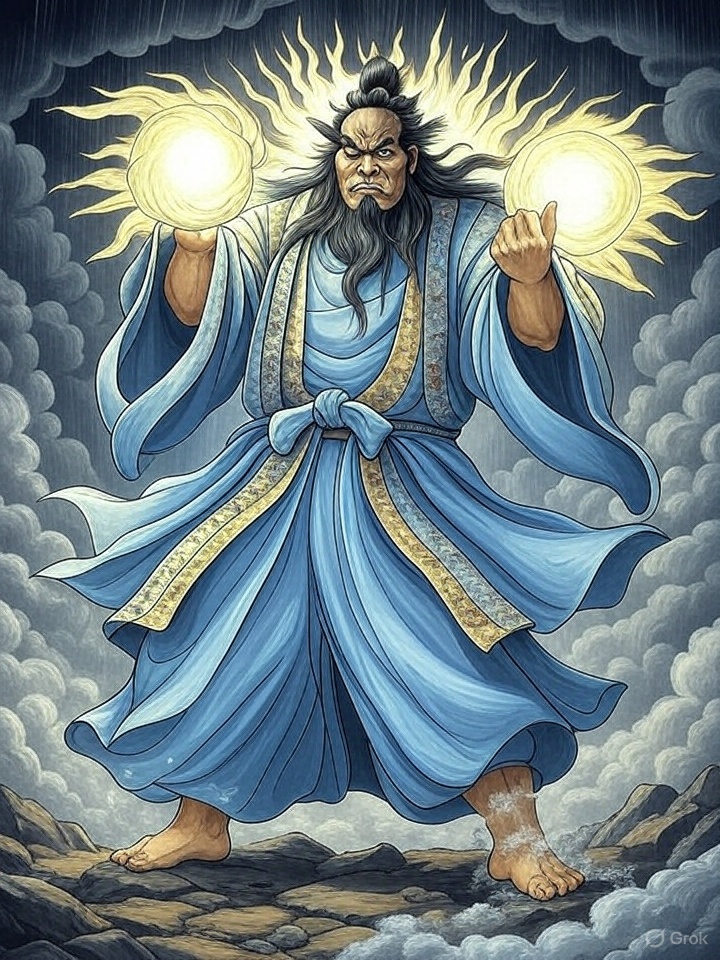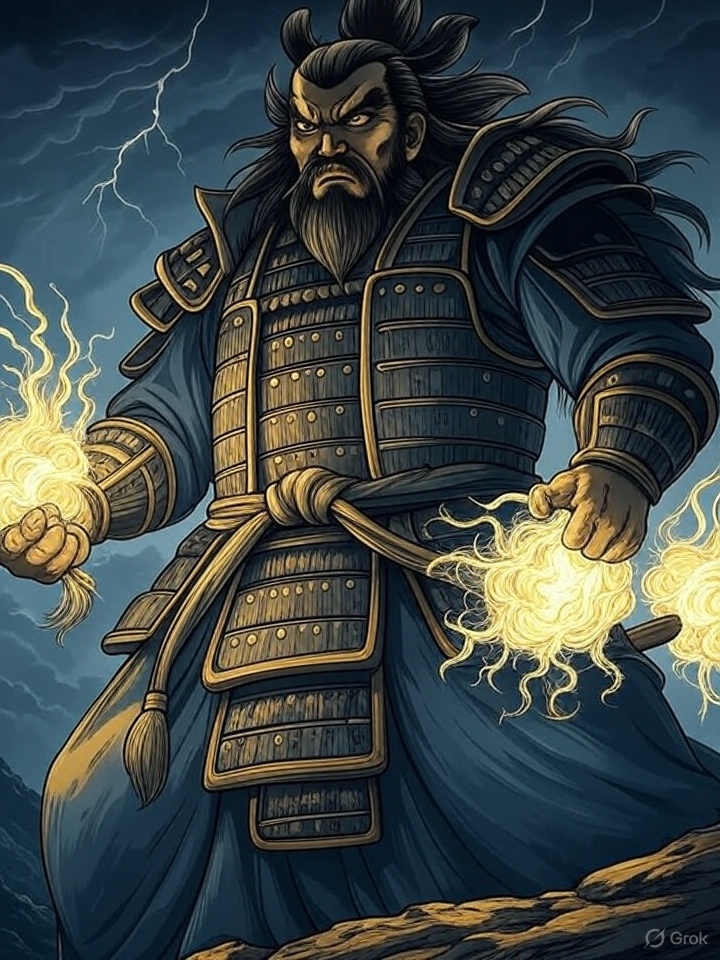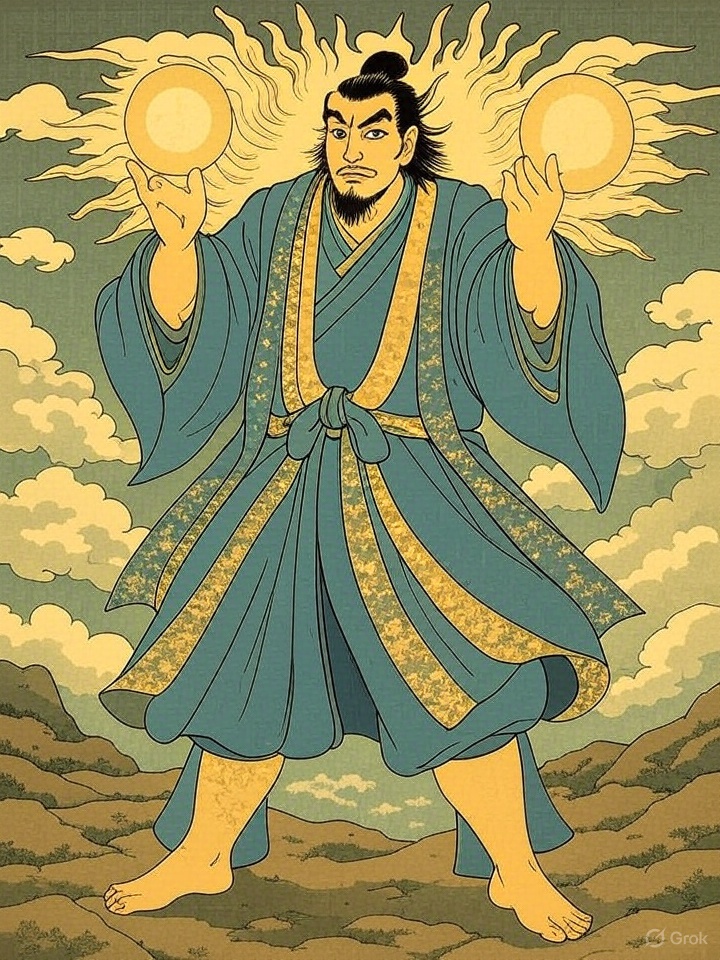Name Meaning
Ikazuchi-no-Kami (雷の神) translates directly to “God of Thunder.” The name derives from "ikazuchi" (thunder) and "kami" (deity or spirit).
Origin
- One of the oldest Shinto thunder deities, sometimes considered a form of Raijin.
- Mentioned in the Kojiki and Nihon Shoki, Japan’s earliest mythological texts.
- Also venerated as a protector of rice fields, bringing rainstorms.
Appearance
- Often depicted with drums that he strikes to create thunder.
- Sometimes appears as a fierce man surrounded by lightning and clouds.
- May be represented in statues alongside Fūjin, the wind god.
Behavior & Myths
- Worshiped in shrines to protect from lightning strikes and drought.
- Considered both a punisher and bringer of blessings, depending on the season and context.
- Sometimes said to cause illness or spiritual disturbance if disrespected.
Symbolism
- Symbolizes divine power, natural force, and spiritual judgment.
- Represents the duality of nature — destructive yet life-giving.
- Invoked in agricultural rituals and festivals related to rain.



